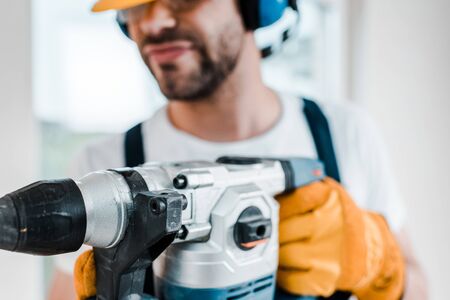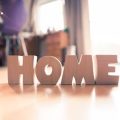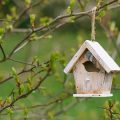Introduction to Environmental Hazards in Home Inspections
When buying or selling a home in the United States, a home inspection is one of the most important steps in the real estate process. While many people focus on visible issues like roofing problems or plumbing leaks, environmental hazards such as radon and mold are just as critical—if not more so. These hidden dangers can affect both the health of the homes occupants and the overall value of the property.
Environmental factors are increasingly becoming a top concern for homebuyers, sellers, and inspectors. Issues like radon gas and mold growth may not be immediately noticeable, but they can pose serious health risks and lead to costly remediation if not addressed properly. Because of this, understanding how these elements impact home inspections helps buyers make informed decisions and protects sellers from future liability.
Why Radon and Mold Matter in Home Inspections
Radon is a naturally occurring radioactive gas that can seep into homes through cracks in the foundation. Long-term exposure to high levels of radon is known to cause lung cancer. Mold, on the other hand, thrives in damp environments and can trigger allergies, respiratory problems, and structural damage if left untreated. Both of these hazards are invisible to the naked eye but have very real consequences.
Common Environmental Hazards Found During Home Inspections
| Hazard | Description | Potential Health Risks |
|---|---|---|
| Radon | A colorless, odorless radioactive gas that enters homes from the ground | Lung cancer with long-term exposure |
| Mold | Fungi that grow in moist areas like basements, bathrooms, or attics | Allergies, asthma, respiratory issues |
| Asbestos | A mineral fiber once used in building materials | Lung disease when fibers are inhaled |
| Lead Paint | Paint used before 1978 that contains toxic lead compounds | Developmental delays in children, neurological damage |
The Role of Environmental Testing in Real Estate Transactions
In many U.S. states, environmental testing is either recommended or required as part of a complete home inspection. Buyers often request radon testing or mold assessments before finalizing a purchase to ensure there are no hidden issues that could affect their familys health or require expensive repairs later on. Sellers may also choose to pre-inspect their homes for environmental hazards to make their property more appealing and market-ready.
Ultimately, identifying and addressing environmental hazards like radon and mold plays a vital role in ensuring safe living conditions and smooth real estate transactions. These factors influence not only the decision-making process but also negotiations around price, repairs, or even whether a deal goes through at all.
2. Understanding Radon: What It Is and Why It Matters
When buying a home in the U.S., one environmental factor that often gets overlooked is radon gas. Even though it’s invisible and odorless, radon can pose serious health risks if not properly addressed during a home inspection.
What Is Radon?
Radon is a naturally occurring radioactive gas that forms when uranium in soil, rock, or water breaks down. It typically moves up through the ground and enters homes through cracks in the foundation, gaps around pipes, or other openings. Once inside, it can accumulate to dangerous levels without any obvious signs.
How Does Radon Enter Homes?
Radon enters buildings from the surrounding soil. The pressure difference between the interior of your home and the soil outside can draw radon gas indoors. Here are some common entry points:
| Common Entry Points | Description |
|---|---|
| Foundation Cracks | Small cracks in concrete slabs or basement floors allow radon to seep in. |
| Gaps Around Pipes | Openings where plumbing or wiring enters the home can be pathways for radon. |
| Sump Pumps or Drainage Systems | Poorly sealed sump pump pits can allow radon into basements. |
| Crawl Spaces | Unsealed dirt floors in crawl spaces let radon rise into living areas. |
Health Risks Associated with Radon
The main concern with radon is its link to lung cancer. In fact, according to the U.S. Environmental Protection Agency (EPA), radon is the second leading cause of lung cancer after smoking. Long-term exposure to high levels of radon significantly increases your risk, especially for smokers.
Key Health Facts About Radon:
- Radon-related lung cancer causes about 21,000 deaths per year in the U.S.
- You cant see, smell, or taste radon — testing is the only way to detect it.
- The EPA recommends action if radon levels are 4 picocuries per liter (pCi/L) or higher.
The Importance of Testing During Home Inspections
Because you cant detect radon without testing, its essential to include a radon test as part of your home inspection process. Many buyers request this test before closing on a home, especially in areas known for higher radon levels. A professional inspector will use specialized equipment to monitor air quality over 48 hours to determine if mitigation is needed.
Benefits of Radon Testing When Buying a Home:
- Avoid future health risks by identifying potential problems early.
- Negotiate repairs or price reductions if elevated levels are found.
- Peace of mind knowing your new home is safe for your family.
If high levels are detected, installing a radon mitigation system can usually resolve the issue effectively. These systems typically involve venting radon from beneath the home before it can enter living spaces.
![]()
3. The Mold Factor: Health Risks and Structural Concerns
Mold is a common environmental issue that can significantly impact a home inspection. It often grows in damp, poorly ventilated areas such as basements, bathrooms, and behind walls. Understanding how mold develops and what it means for your home is important for both buyers and sellers.
What Causes Mold Growth?
Mold needs moisture, warmth, and organic material to grow. In homes, this usually happens due to:
- Leaky pipes or roofs
- Poor ventilation
- Flooding or water intrusion
- High humidity levels
Even small amounts of moisture can trigger mold growth if left unchecked.
Impact on Indoor Air Quality
Mold releases spores into the air, which can affect indoor air quality. These spores can be inhaled by people living in the home, potentially leading to various health issues.
Common Health Issues Linked to Mold Exposure:
| Health Issue | Description |
|---|---|
| Allergic Reactions | Sneezing, runny nose, red eyes, and skin rash |
| Asthma Attacks | Mold can trigger asthma symptoms in sensitive individuals |
| Respiratory Problems | Coughing, wheezing, and shortness of breath |
| Chronic Fatigue | Prolonged exposure may lead to tiredness or fatigue |
Mold and Home Inspections
During a home inspection, visible mold or signs of moisture damage can raise red flags. Inspectors will often recommend further evaluation or testing if they suspect a mold problem. This can delay the sale process and even lower a homes market value.
How Mold Affects Property Value:
- Decreases Buyer Confidence: Buyers may worry about hidden damage or future repairs.
- Repair Costs: Professional mold remediation can be expensive.
- Lender Issues: Some lenders may hesitate to approve loans on homes with known mold problems.
Preventing Mold Growth
The best way to deal with mold is prevention. Here are some simple tips homeowners can follow:
- Fix leaks promptly
- Use exhaust fans in bathrooms and kitchens
- Keep indoor humidity below 60%
- Ensure proper drainage around the home’s foundation
- Regularly inspect areas prone to moisture buildup
Mold might seem like just an ugly stain on the wall, but it’s much more than that. From health concerns to impacting your homes value, its an issue that deserves serious attention during any home inspection.
4. Home Inspector’s Role in Identifying Environmental Risks
When it comes to environmental risks like radon and mold, a home inspector plays an important role in the home buying process. While a standard home inspection doesnt always include detailed environmental testing, inspectors are trained to recognize warning signs that may indicate the presence of these hidden hazards.
What Inspectors Look For
Home inspectors typically assess visible areas of the property for signs that could suggest mold growth or potential radon exposure. Heres what they commonly look for:
| Environmental Risk | What Inspectors Look For |
|---|---|
| Mold | Musty odors, water stains, visible mold patches, high humidity areas (like bathrooms or basements), signs of water damage or leaks |
| Radon | Basement and crawlspace conditions, foundation cracks, location risk (based on EPA radon zones) |
Tools and Testing Protocols
Inspectors may use basic tools to detect moisture or humidity levels, which can be indicators of mold risk. However, specialized testing is often needed for accurate results:
- Moisture meters: Used to detect dampness behind walls or under floors.
- Thermal imaging cameras: Identify temperature changes that might point to moisture intrusion.
- Radon test kits: Short-term or long-term kits may be used, but often require lab analysis.
Standard Inspection vs Specialized Testing
A standard home inspection has limitations when it comes to environmental issues. Heres a breakdown:
| Service | Included in Standard Inspection? | Description |
|---|---|---|
| Mold Testing | No | Requires lab sampling and air quality testing by a certified specialist. |
| Radon Testing | No (unless requested) | A separate service that involves placing a test kit in the home for several days. |
When Should You Request Additional Testing?
If the inspector notices any signs of water intrusion, musty smells, or youre purchasing in a known high-radon area, its wise to request specialized testing. These tests can provide peace of mind and help you avoid costly surprises after moving in.
5. Remediation and Negotiation: What Happens After Detection
Discovering environmental issues like radon or mold during a home inspection can feel overwhelming, but its not the end of the road. Whether youre a homeowner or a buyer, understanding your options for remediation and how these findings can impact sale negotiations is key to moving forward confidently.
Steps to Take After Detecting Radon or Mold
Once mold or radon is found during an inspection, there are several practical steps homeowners or buyers can take:
For Homeowners:
- Hire Certified Professionals: Always work with licensed contractors or specialists to assess and remediate the issue.
- Get Estimates: Obtain multiple quotes for remediation so you can make informed decisions and prepare for possible negotiations.
- Fix the Problem: Address the issue thoroughly—partial fixes may not pass re-inspections and could delay the sale.
- Provide Documentation: Keep records of all work done, including before-and-after test results and contractor receipts. Buyers will likely ask for this.
For Buyers:
- Request Remediation: Ask the seller to fix the issue before closing, especially if its a serious health risk like high radon levels or toxic mold.
- Negotiate Price Reductions: If you prefer to handle remediation yourself, negotiate a lower purchase price to offset future costs.
- Add Contract Contingencies: Make sure your real estate contract includes contingencies for environmental hazards, allowing you to back out if necessary repairs arent completed.
Mold vs. Radon: Typical Remediation Options
| Issue | Common Solutions | Estimated Cost Range (USD) |
|---|---|---|
| Mold | Mold removal, replacing contaminated materials, improving ventilation | $500 – $6,000+ |
| Radon | Installing a radon mitigation system (sub-slab depressurization) | $800 – $2,500 |
Impact on Sale Negotiations
The discovery of mold or high radon levels can influence how much leverage each party has during negotiations. For sellers, proactively addressing issues and showing proof of remediation builds trust and keeps deals from falling through. For buyers, these findings are opportunities to request repairs or price adjustments.
Selling Strategies After Remediation
- Disclose Everything: Full disclosure about past issues and fixes helps avoid legal trouble down the road.
- Add Value Through Upgrades: Improving ventilation systems or installing a radon mitigation system can be used as selling points.
Buying Strategies When Issues Are Found
- Bargain Wisely: Use professional estimates to justify your counteroffer.
- Avoid Emotional Decisions: Don’t let fear derail a good deal—many environmental issues are manageable with the right help.
Tackling environmental concerns head-on not only protects health but also creates transparency between buyers and sellers—making for smoother transactions in today’s real estate market.
6. Preventive Strategies and Long-Term Maintenance
Keeping your home safe from environmental hazards like radon and mold doesn’t have to be overwhelming. With a few simple steps and regular maintenance, you can protect your indoor air quality and your property value for years to come. Here are some homeowner-friendly tips to help reduce risks and maintain a healthy living environment.
Regular Home Maintenance Tips
Staying on top of basic home maintenance tasks is key to preventing moisture problems and keeping harmful substances out of your indoor air. Heres a quick guide:
| Task | Frequency | Purpose |
|---|---|---|
| Check for leaks (roof, plumbing, basement) | Every 3–6 months | Prevent mold growth due to moisture |
| Clean gutters and downspouts | Twice a year | Avoid water buildup near foundation |
| Replace HVAC filters | Every 1–3 months | Improve air circulation and reduce allergens |
| Inspect attic and crawlspaces for mold or mildew | Annually | Catch early signs of contamination |
| Test for radon levels at home | Every 2 years (or after major renovations) | Monitor invisible gas risk to health |
Mold Prevention Basics
Mold thrives in damp, dark spaces. To avoid a costly cleanup or failed home inspection, focus on controlling humidity levels and eliminating sources of excess moisture.
Simple Mold Prevention Tips:
- Use exhaust fans in bathrooms and kitchens when cooking or showering.
- If you live in a humid area, use a dehumidifier in basements or poorly ventilated rooms.
- Avoid storing cardboard boxes or fabrics in damp areas like basements or garages.
- If you see condensation on windows, its a sign to check your indoor humidity levels—ideally, keep it between 30%–50%.
- Dress up small leaks quickly—even a slow drip can lead to mold growth over time.
Radon Awareness and Mitigation
You can’t see or smell radon, but long-term exposure can cause serious health issues. Fortunately, testing is easy and mitigation systems are effective.
Radon Safety Tips:
- You can buy a DIY radon test kit online or from most hardware stores—it’s affordable and easy to use.
- If levels are above 4 pCi/L (picocuries per liter), consider hiring a certified radon mitigation contractor.
- If your home has a mitigation system already installed, make sure the fan is working and the system is inspected every couple of years.
- If youre buying or selling a home, radon testing should be part of the inspection process.
Create a Healthier Living Space Year-Round
Your home is an investment—not just financially but also in your family’s well-being. Taking proactive steps today helps prevent expensive repairs tomorrow while ensuring cleaner air inside. Whether youre preparing for a home inspection or just want peace of mind, these strategies offer lasting value.
By staying informed and consistent with upkeep, you’ll create an environment that’s both safe and sustainable—no matter what nature throws your way.


